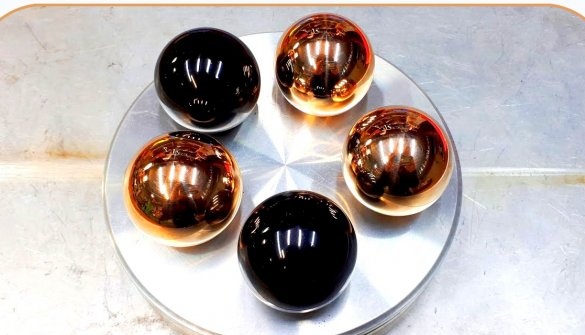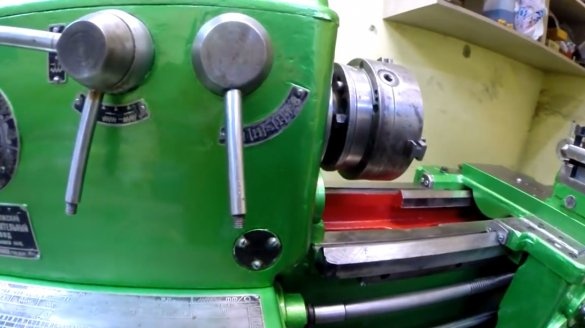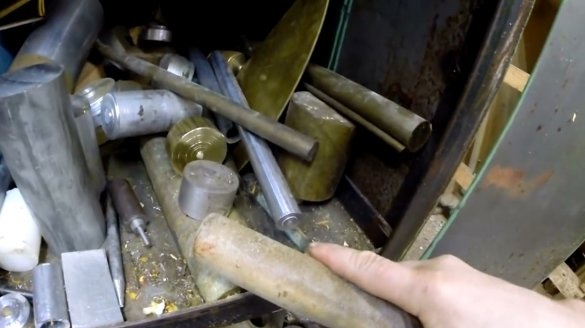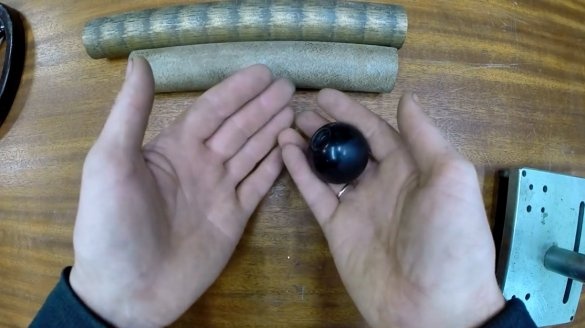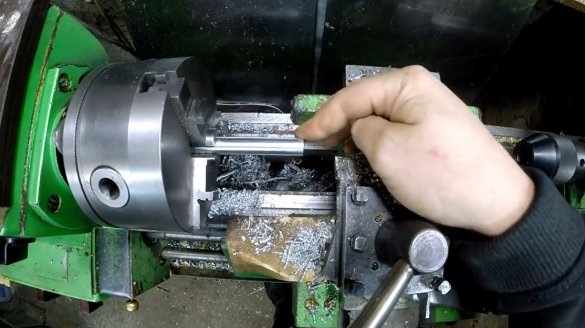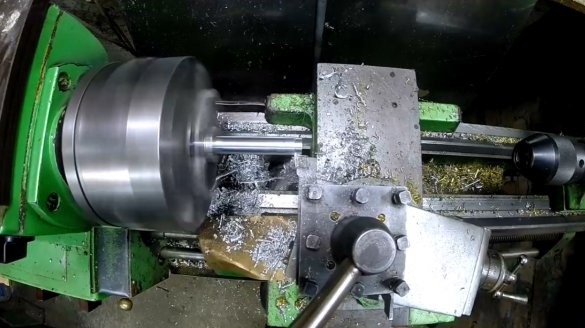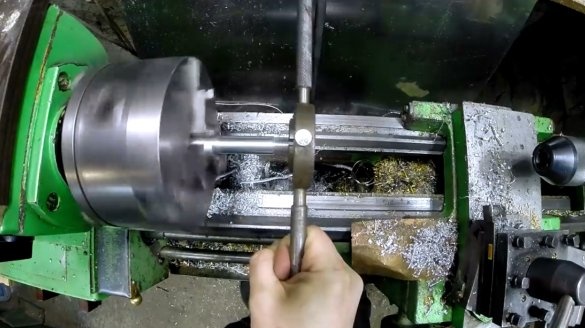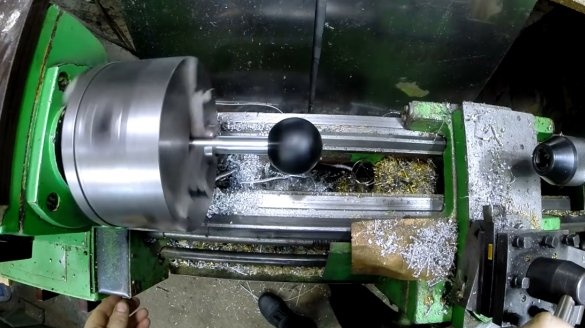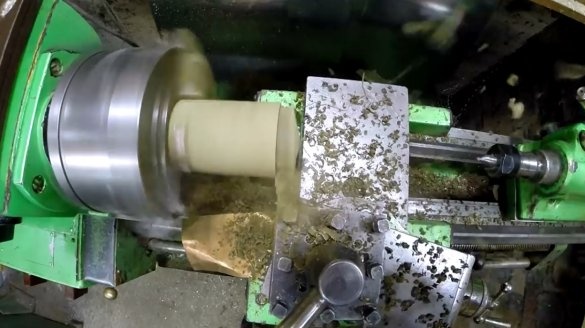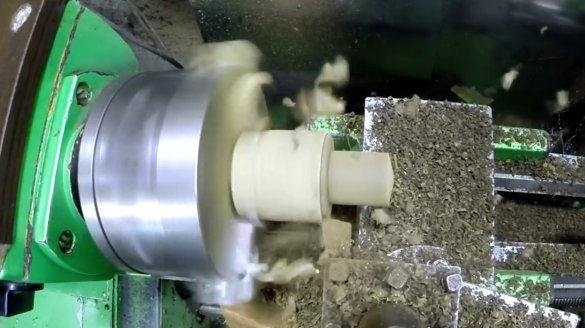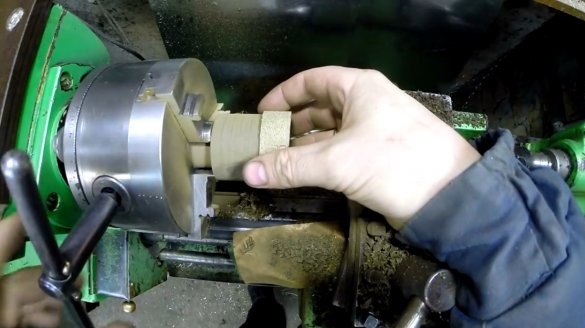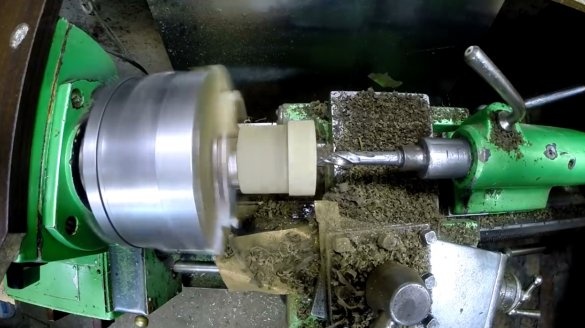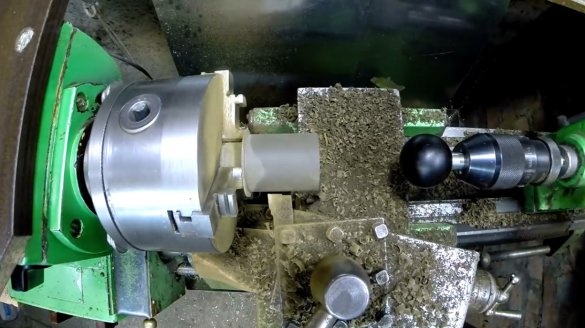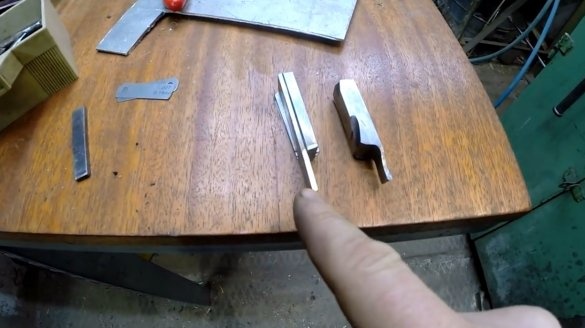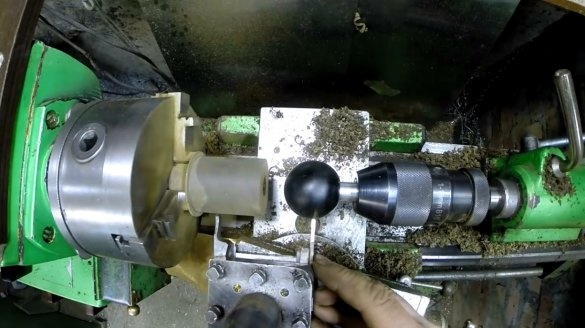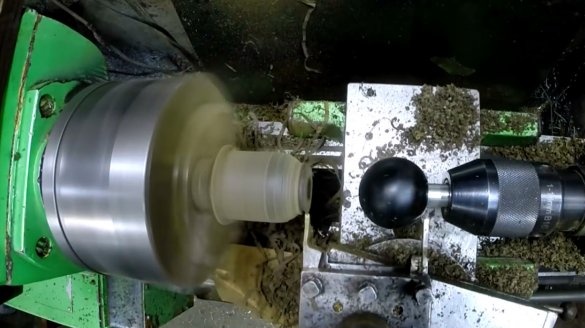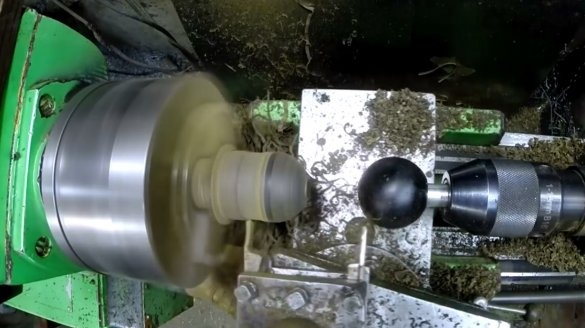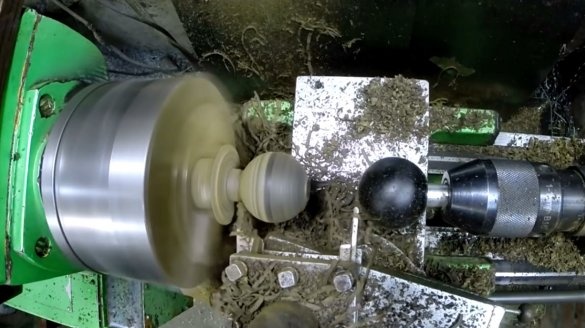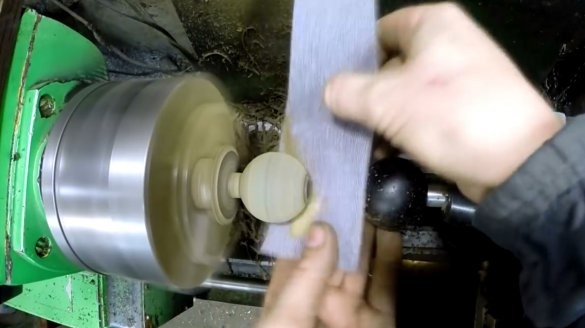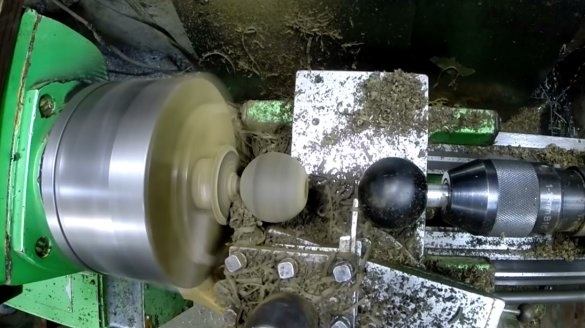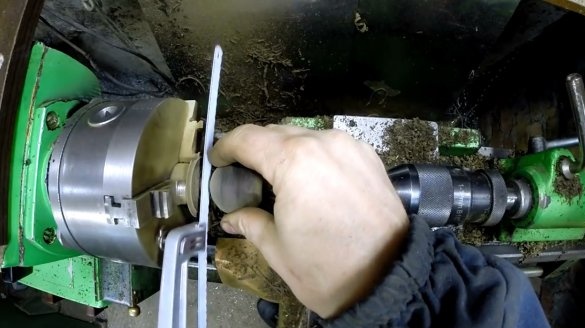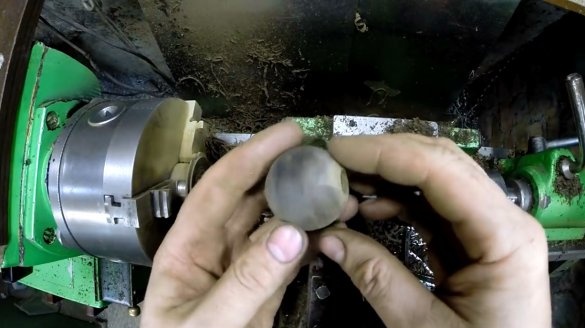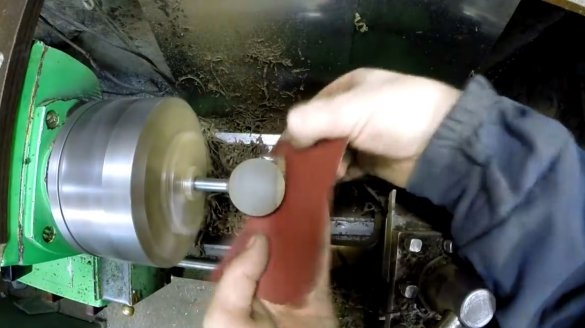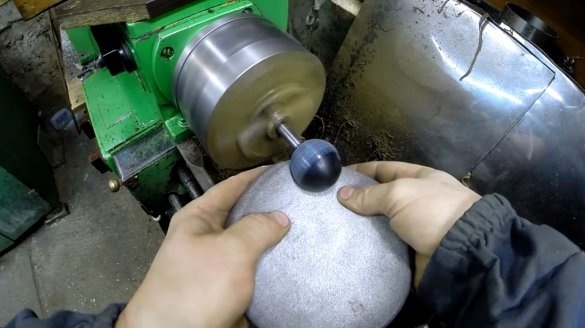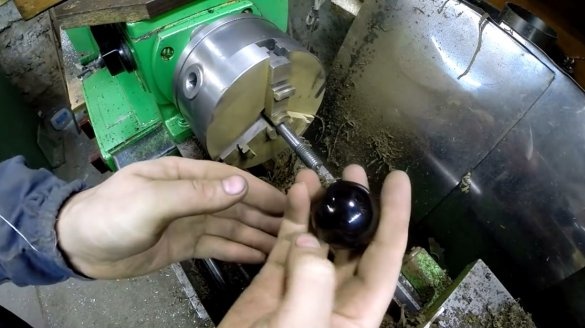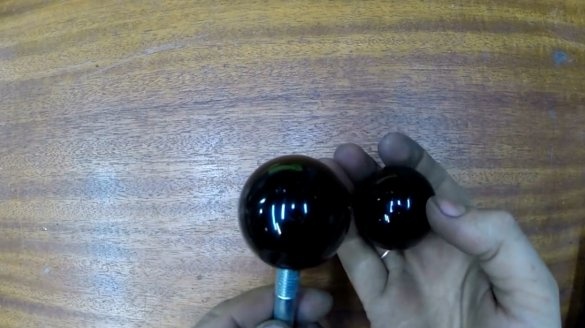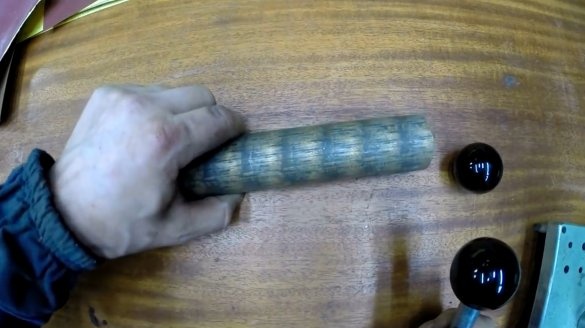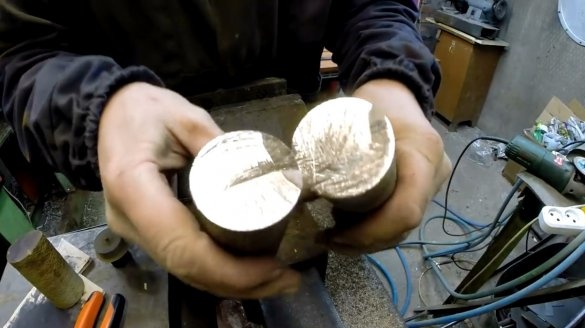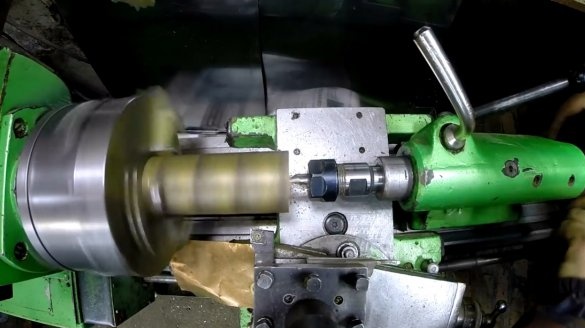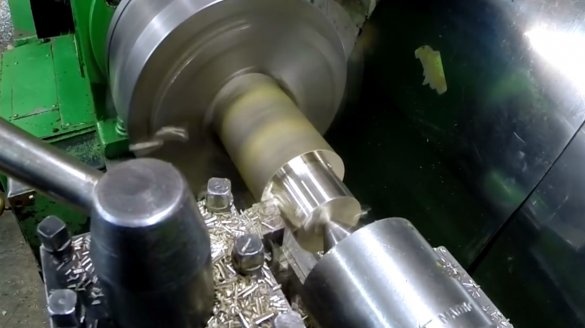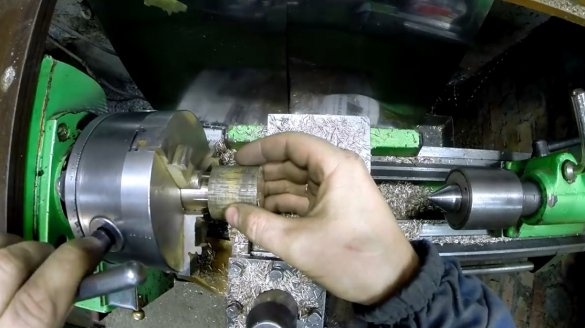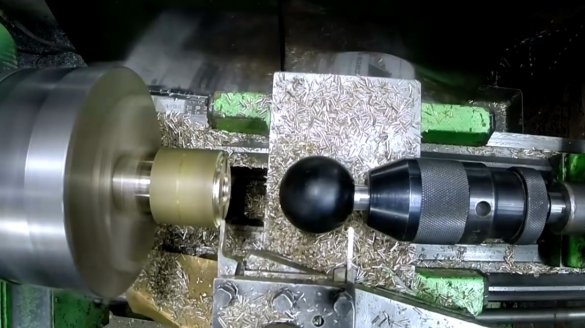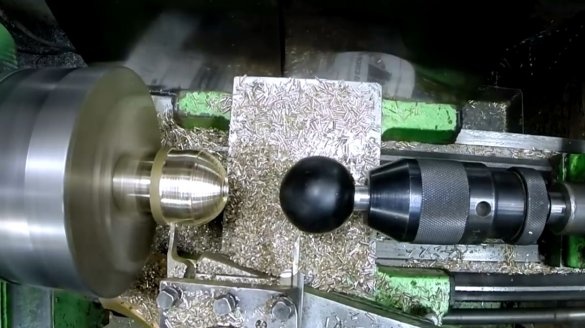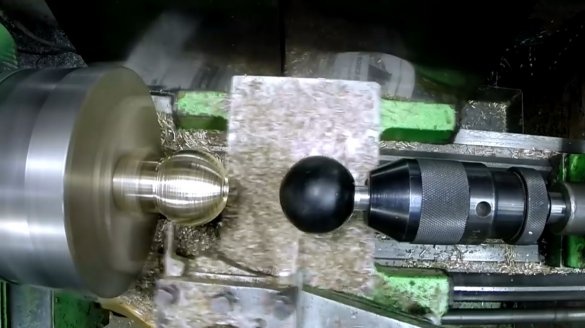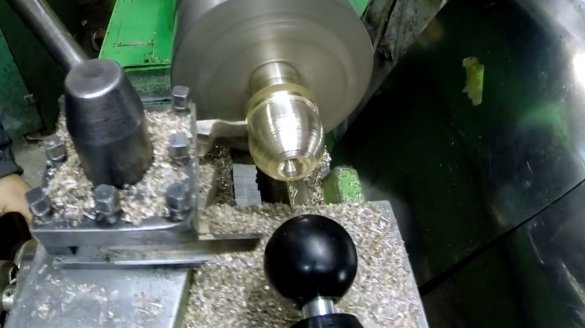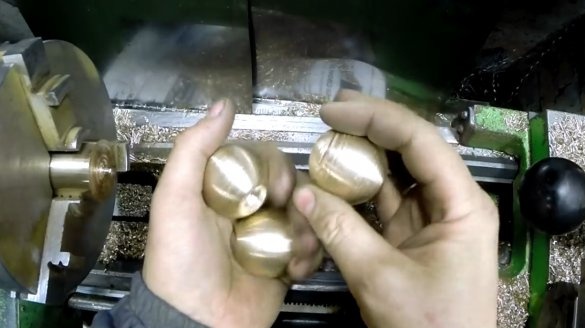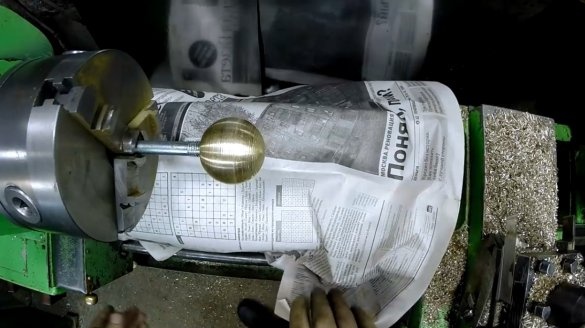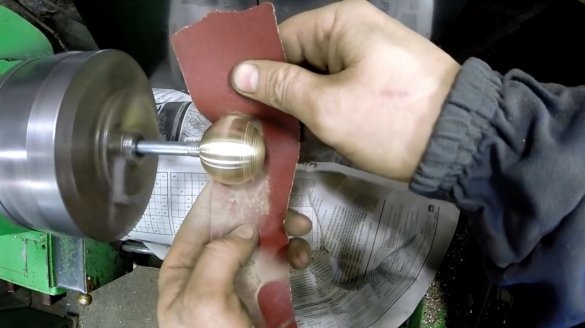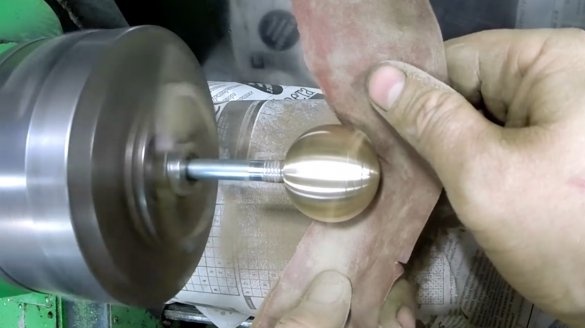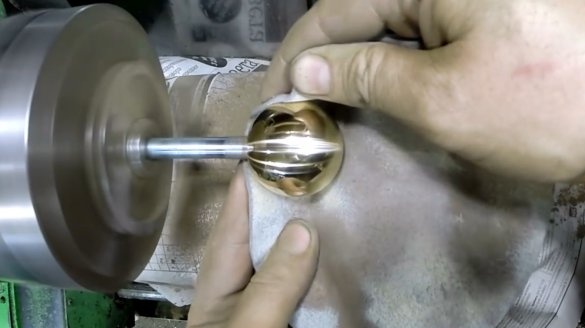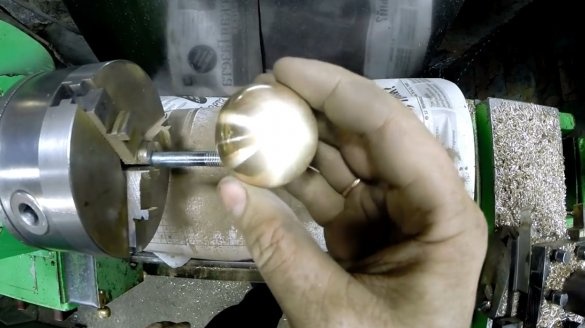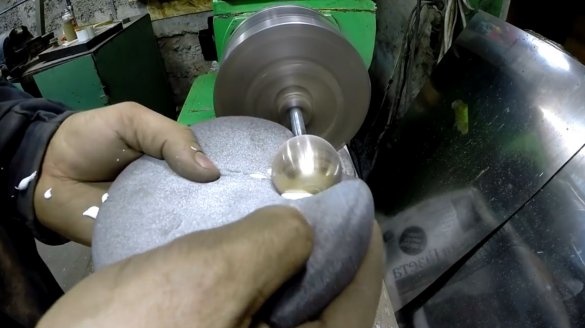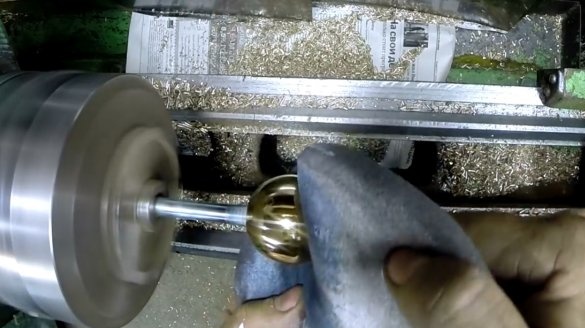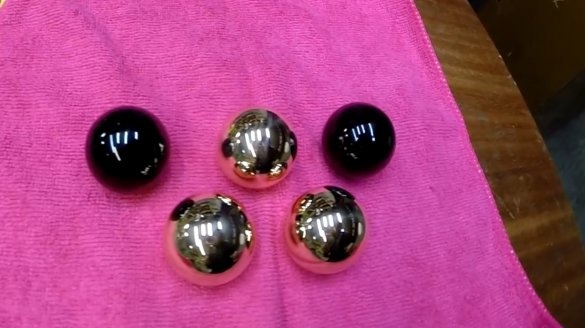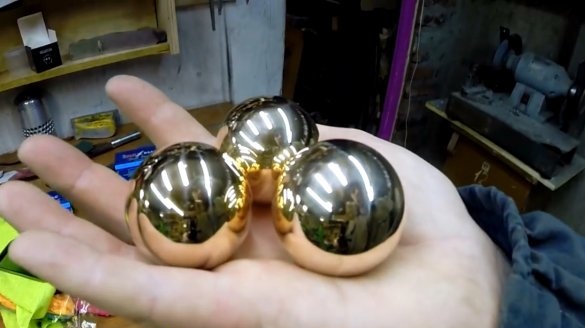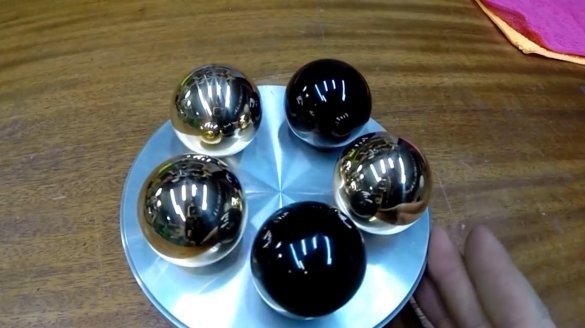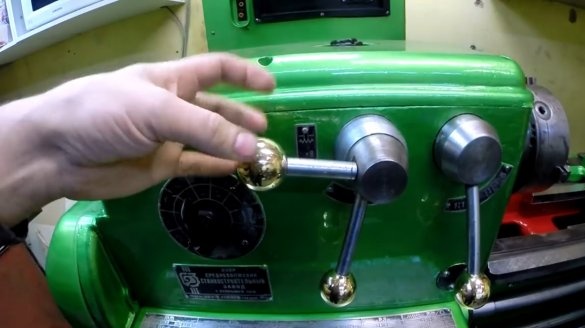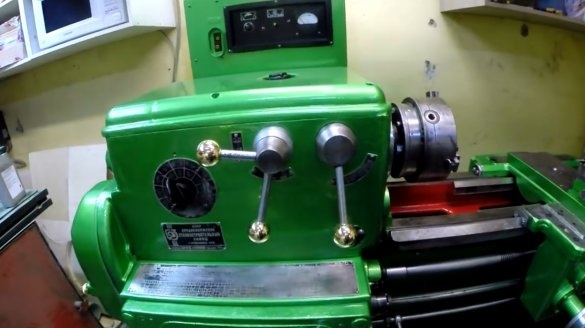In this article, the author of the YouTube channel Igor Negoda will tell you about an interesting way to carve balls and more.
Materials
- Ebonite
- Bronze
- steel bar
- Sandpaper.
Instruments, used by the author.
- Lathe
- Cutters
-, lerka.
Manufacturing process.
When assembling a lathe, Igor ran into a problem. Included in it were no balls from the handles.
He decided to make them anew from brass and ebonite discs.
To begin with, he installed a steel bar in the cartridge, turned it and cut a thread on it
I screwed the original ball from the machine on it. This will be the template for copying.
He turned an ebonite blank for the manufacture of the first test ball, and turned it over in a cartridge.
I drilled a hole in the workpiece and cut a thread in it. Grind the second side. The diameter of the blank must be the same as the part to be copied.
Then two such incisors will be required, one of them is a copier and is not sharpened.
He rests the copier on the ball and begins to grind the blank.
Pre-polished the ball, and cut it with a hacksaw. Ebonite has the unpleasant property of forming chips that are difficult to sand.
Now it winds the ball on the mandrel, and continues grinding and polishing.
Here we managed to get such an ebonite ball.
Copy technology worked out. Now you can experiment with a bronze disc.
The process is practically no different from the processing of hard rubber.
These are the brass balls obtained, but they are still waiting for the grinding stage.
And of course, finish polishing with abrasive paste.
That's the beauty that Igor got. Using this technology, you can also copy parts of a different shape.
Now it’s not a shame to screw such balls onto the handles of the machine. Right under the gold turned stanochka.
Thanks to the author for an interesting technology for copying parts!
All good mood, good luck, and interesting ideas!
Author video can be found here.

